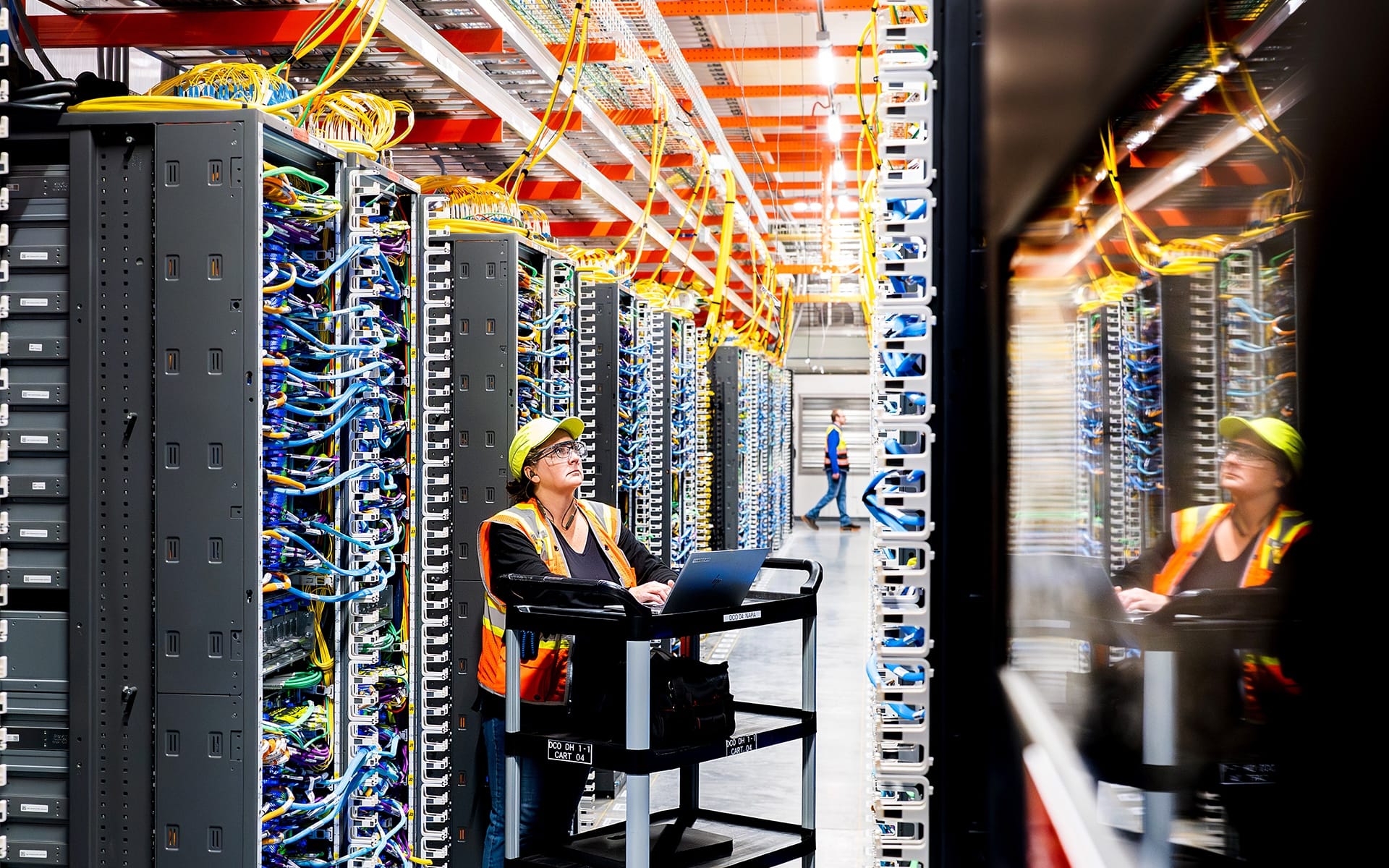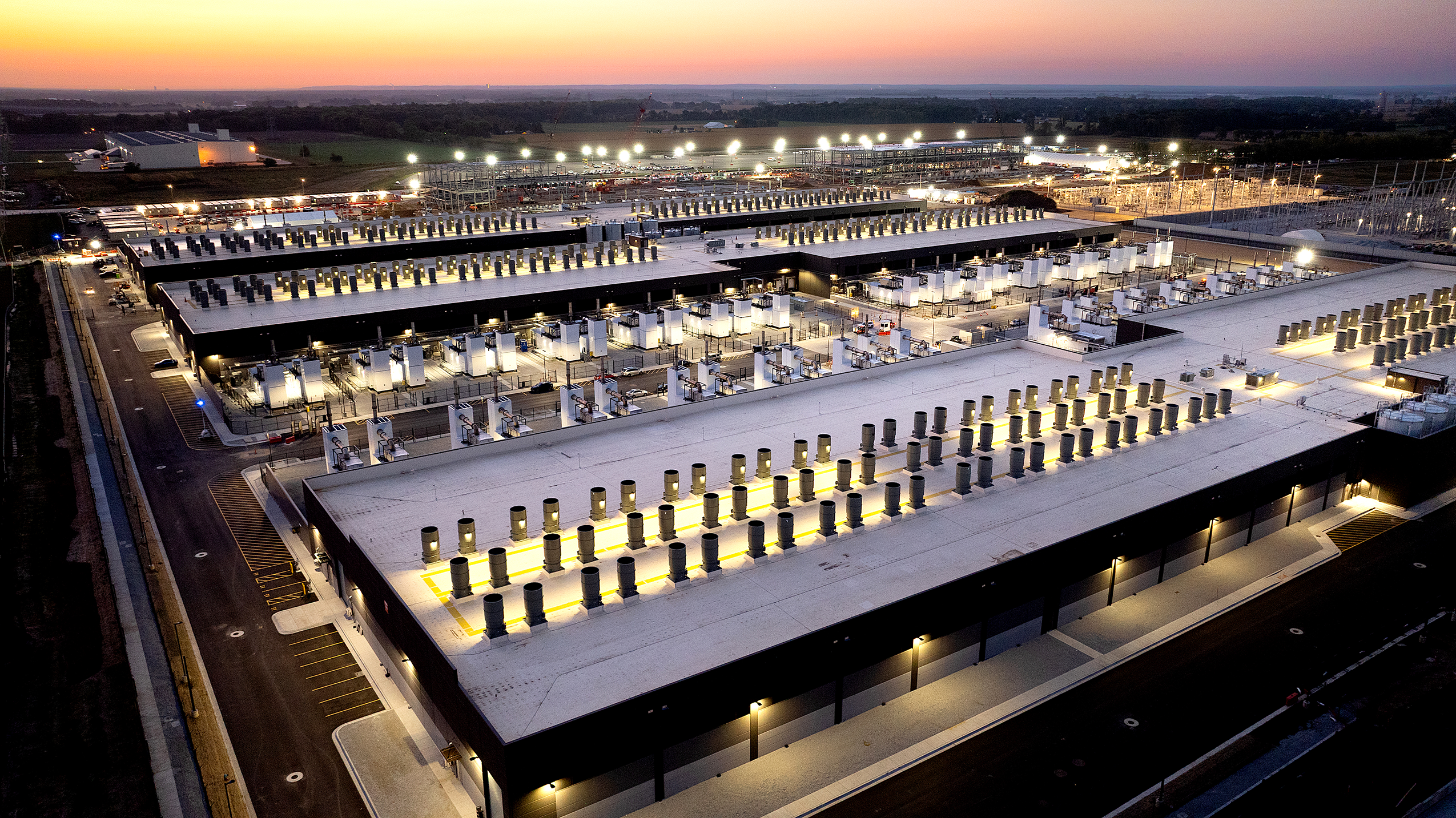AWS activates Project Rainier with 500,000 Trainium2 chips
AWS brings online Project Rainier with nearly 500,000 Trainium2 chips in under a year. Anthropic scales Claude training to over 1 million chips by year-end.

AWS announced on October 29, 2025, the activation of Project Rainier, an artificial intelligence compute cluster featuring nearly half a million Trainium2 chips. The infrastructure project, first revealed less than a year prior, represents one of the largest AI computing deployments built specifically for training frontier models. Anthropic, the AI safety and research company, currently uses this infrastructure to build and deploy Claude, with plans to expand operations across more than 1 million Trainium2 chips by the end of 2025.
According to the announcement, Project Rainier provides more than five times the compute power Anthropic used to train its previous AI models. The infrastructure spans multiple data centers in the United States and operates as an "EC2 UltraCluster of Trainium2 UltraServers," utilizing Amazon Elastic Compute Cloud services that enable customers to rent virtual computers rather than maintaining physical servers.
The scale of Project Rainier establishes new benchmarks for AI infrastructure deployment. Ron Diamant, an AWS distinguished engineer and head architect of Trainium, stated: "Project Rainier is one of AWS's most ambitious undertakings to date. It's a massive, one-of-its-kind infrastructure project that will usher in the next generation of artificial intelligence models."
Subscribe PPC Land newsletter ✉️ for similar stories like this one
Technical architecture and chip performance
Trainium2 chips represent custom-designed AWS hardware built specifically for training artificial intelligence systems. Unlike general-purpose processors, these specialized chips process the enormous data volumes required to teach AI models increasingly complex tasks. A single Trainium2 chip completes trillions of calculations per second. According to the announcement, counting to one trillion would require one person more than 31,700 years, yet Trainium2 performs such calculations instantaneously.
Project Rainier deploys infrastructure that exceeds previous AWS AI computing platforms by 70%. The UltraServer configuration combines four physical Trainium2 servers, each containing 16 chips, for a total of 64 chips per UltraServer. These servers communicate through specialized high-speed connections called NeuronLinks, identifiable by distinctive blue cables that function as dedicated express lanes for data movement.
Traditional data center servers operate independently, requiring external network switches when sharing information. This introduces latency that becomes problematic at scale. The UltraServer design addresses this limitation through internal high-bandwidth connections that significantly accelerate complex calculations across all 64 chips. When tens of thousands of these UltraServers operate on the same problem, they form Project Rainier's UltraCluster.
Communication within Project Rainier occurs at two critical levels. NeuronLinks provide high-bandwidth connections within UltraServers, while Elastic Fabric Adapter networking technology, marked by yellow cables, connects UltraServers inside and across data centers. This two-tier approach maximizes speed where needed while maintaining flexibility to scale across multiple data center buildings.
Vertical integration and operational reliability
AWS builds its own hardware, controlling every aspect of the technology stack from individual chip components to software systems and complete data center design. This vertical integration enables the company to optimize at precise points in the system, whether through redesigning power delivery systems, rewriting coordination software, or implementing multiple solutions simultaneously. By maintaining comprehensive oversight of every component and system level, AWS can troubleshoot and innovate rapidly.
Amazon brought Project Rainier online during the third quarter, with CEO Andy Jassy detailing the infrastructure's complexity during an October 30, 2025 earnings call: "it's not simple to be able to build a cluster that has 500,000 plus chips going to 1 million. That's an infrastructure feat that's hard to do at scale."
Trainium2 reached full subscription status and became a multibillion-dollar business growing 150% quarter-over-quarter. The custom AI chip delivers 30% to 40% better price-performance than competing options, according to the earnings announcement.

Partnership with Anthropic
Amazon completed a $4 billion investment commitment in Anthropic by March 2024, establishing AWS as Anthropic's primary cloud provider. The partnership extends beyond financial investment to technical integration, with Anthropic offering Claude models through Amazon Bedrock while utilizing AWS as its primary infrastructure provider.
Anthropic actively uses Project Rainier to build and deploy Claude. The more compute dedicated to training this frontier model, the smarter and more accurate it becomes, according to AWS. Claude's expected deployment across more than 1 million Trainium2 chips by year-end will support workloads including both training and inference operations.
The infrastructure serves Anthropic's growing operations. Anthropic's run-rate revenue grew from approximately $1 billion at the beginning of 2025 to over $5 billion by August 2025, with the company now serving over 300,000 business customers. Large accounts representing over $100,000 in run-rate revenue grew nearly seven times in the past year.
Buy ads on PPC Land. PPC Land has standard and native ad formats via major DSPs and ad platforms like Google Ads. Via an auction CPM, you can reach industry professionals.
Energy efficiency and sustainability measures
Teams operating AWS data centers focus on improving energy efficiency through innovations in rack layouts, electrical distribution, and cooling techniques. All electricity consumed by Amazon's operations, including data centers, was matched 100% by renewable energy resources in 2023 and 2024, according to the announcement.
Amazon invests billions of dollars in nuclear power, battery storage, and large-scale renewable energy projects worldwide to power its operations. The company has been the largest corporate purchaser of renewable energy globally for the past five years. Amazon maintains its commitment to achieving net-zero carbon by 2040, a goal unchanged by Project Rainier's addition.
AWS announced last year the rollout of new data center components combining advances in power, cooling, and hardware for both new construction and existing facilities. These components are projected to reduce mechanical energy consumption by up to 46% and reduce embodied carbon in concrete by 35%. Sites constructed to support Project Rainier will include various upgrades for energy efficiency and sustainability.
Water stewardship represents another focus area. AWS engineers facilities to use minimal water or none at all. One method eliminates cooling water use in many facilities for most of the year, relying instead on outside air. Data centers in St. Joseph County, Indiana—one of the Project Rainier sites—will maximize outside air cooling. From October to March, these data centers will not use any water for cooling, while on average days from April to September they will only use cooling water for a few hours per day.
According to the announcement, a recent Lawrence Berkeley National Laboratory report on data center industry water usage efficiency indicates the industry standard measure stands at 0.375 liters of water per kilowatt-hour. At 0.15 liters of water per kilowatt-hour, AWS's water usage efficiency is more than twice as good as the industry average and represents a 40% improvement since 2021.
Implications for artificial intelligence development
Project Rainier represents a fundamental shift in what becomes possible with artificial intelligence, extending beyond making Claude a more sophisticated model. The infrastructure now serves as a template for deploying computational power that enables AI to tackle challenges that have long resisted human solution, potentially enabling breakthroughs across medicine, climate science, and other fields.
Named after the 14,410-foot stratovolcano visible from Seattle on clear days, Project Rainier marks a distinct moment in computing history. The infrastructure's scale and capabilities could transform the technological landscape as AI systems gain access to unprecedented computational resources.
AWS infrastructure developments extend beyond AI training to advertising technology, with the company positioning itself as the underlying technology provider for the digital advertising industry. AWS generated $30.9 billion in revenue and $10.2 billion in operating income in the third quarter, accounting for roughly 70% of Amazon's total profit.
The implications for the marketing community stem from AWS's dual role as both infrastructure provider and enabler of AI systems that power marketing tools. AWS announced RTB Fabric on October 23, 2025, offering single-digit millisecond latency and 80% cost savings for advertising technology companies processing real-time bidding transactions. This infrastructure layer provides the foundation for programmatic advertising operations while Project Rainier enables the AI models that increasingly drive marketing personalization and optimization.
Anthropic's Claude has expanded capabilities that demonstrate the practical applications of large-scale AI infrastructure. The company launched Claude for Financial Services on July 15, 2025, integrating market data feeds with internal enterprise systems. Claude artifacts expanded on June 25, 2025, to enable AI-powered application development, with millions of users creating over half a billion artifacts since the feature's initial launch.
Marketing technology vendors observe these developments closely. The computational resources required to train sophisticated AI models have historically limited which companies could compete in developing advanced marketing automation and personalization tools. Project Rainier's scale and Anthropic's expanding operations suggest that cloud-based AI infrastructure may enable more companies to access the computational resources necessary for developing competitive marketing AI systems.
AWS added more than 3.8 gigawatts of power capacity in the past 12 months, exceeding any other cloud provider. The company plans to double total capacity by 2027, with at least one additional gigawatt coming online in the fourth quarter of 2025 alone. This expansion provides the foundation for continued growth in both AI training infrastructure and the applications that depend on it.
Timeline
- Less than one year ago: AWS first announces Project Rainier
- March 2024: Amazon completes $4 billion investment commitment in Anthropic, establishing AWS as Anthropic's primary cloud provider
- May 2025: Claude Code transitions from research preview to general availability
- June 25, 2025: Anthropic expands Claude artifacts feature to enable AI-powered application development
- July 15, 2025: Anthropic launches Claude for Financial Services, integrating market data feeds with enterprise systems
- August 2025: Anthropic's run-rate revenue reaches over $5 billion
- Third Quarter 2025: AWS brings Project Rainier online with nearly 500,000 Trainium2 chips
- October 23, 2025: AWS announces RTB Fabric for real-time bidding infrastructure
- October 29, 2025: AWS officially announces Project Rainier activation
- October 30, 2025: Amazon reports third quarter results including Project Rainier deployment details
- End of 2025 (planned): Anthropic expects Claude to operate on more than 1 million Trainium2 chips
Subscribe PPC Land newsletter ✉️ for similar stories like this one
Summary
Who: Amazon Web Services activated the infrastructure in collaboration with Anthropic. Ron Diamant serves as AWS distinguished engineer and head architect of Trainium. CEO Andy Jassy and CFO Brian Olsavsky presented details during the October 30, 2025 earnings call.
What: Project Rainier is an AI compute cluster featuring nearly 500,000 Trainium2 chips spread across multiple U.S. data centers. The infrastructure operates as an EC2 UltraCluster of Trainium2 UltraServers, providing more than five times the compute power Anthropic used for previous AI model training. Anthropic uses this infrastructure to build and deploy Claude, with plans to expand to more than 1 million Trainium2 chips by year-end. The project is 70% larger than any previous AI computing platform in AWS history.
When: AWS announced the activation on October 29, 2025, completing deployment in less than one year after first announcing the project. Amazon brought Project Rainier online during the third quarter of 2025, which ended September 30, 2025.
Where: The infrastructure spans multiple data centers in the United States, including facilities in St. Joseph County, Indiana. The UltraServers connect inside and across these data center buildings using Elastic Fabric Adapter networking technology.
Why: Project Rainier addresses the computational requirements for training frontier AI models, which demand unprecedented processing power to become smarter and more accurate. The infrastructure enables Anthropic to scale Claude training operations while AWS establishes new benchmarks for AI computing deployment. For the marketing community, the development matters because AWS positions itself as both infrastructure provider and enabler of AI systems that power marketing tools, with implications for advertising technology companies that depend on cloud-based computational resources. The project demonstrates how cloud infrastructure providers are competing to support the next generation of AI applications that will drive marketing personalization, optimization, and automation capabilities.

